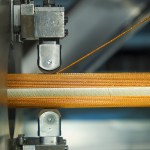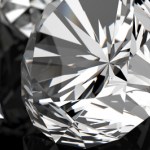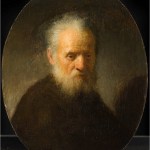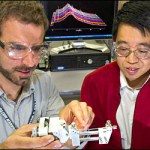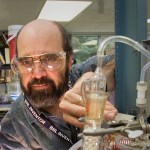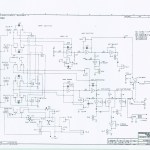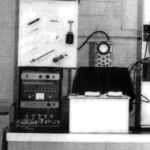Instrumentation
Magnets are neverendingly awesome, and superconductors may be the ultimate in cool—they are, after all, literally extremely cold. And not just anyone has the tools to weave superconducting magnets with compressed metallic thread. It's a more essential skill than you might think.
Ultra-cold superconducting magnets steer high-speed particles inside colliders, keeping the beams tight and guiding them smoothly through the curves of circular racetracks. But those magnets generally rely on iron, an intrinsically magnetic metal, for key structures. That works beautifully for the …
Brookhaven Lab physicist John Smedley wrote this post.
People use diamonds to cut concrete, sharpen knives, and jumpstart wedding plans. As a member of Brookhaven’s Instrumentation Division, I’m on a team that found that diamond also fits the bill for new components in cutting-edge tools we are designing for upgrades for the Relativistic Heavy Ion Collider (RHIC), future linear-accelerator light sources, the National Synchrotron Light Source (NSLS), and NSLS-II-- facilities that researchers from around the world are using to understand more about how the natural world works and how we can…
This guest post was written by Mona S. Rowe, science writer for Brookhaven National Laboratory's National Synchrotron Light Source (NSLS) and NSLS-II.
The quest to authenticate an unknown Rembrandt painting, titled "Old Man with a Beard," hit a dramatic high at the National Synchrotron Light Source (NSLS) at Brookhaven National Laboratory. Using an advanced x-ray detector developed at NSLS, scientists found compelling evidence that the famous Dutch master did indeed have his own hand on the painting.
"After doing the experiments at NSLS, I felt that the painting I held in my hands was a…
Jason Graetz, left, and Jiajun Chen at NSLS beamline X14A with their transparent reactor for viewing chemistry in real time.
Here's a recipe for basic chemistry: Mix a bunch of stuff in a reaction vessel and see what happens. Only you don't really see the action taking place -- unless you have some way to visualize the molecular magic.
Researchers at Brookhaven National Laboratory have developed just such a technique: They've fabricated a transparent chemical reactor vessel that allows x-rays to pass through and capture the chemical changes as they take place.
They recently used this…
This guest post is written by Stephen R. Springston, an atmospheric chemist at Brookhaven National Laboratory. After receiving his Ph.D. in chemistry from Indiana University, he completed a postdoctoral fellowship at the University of Utah before joining Brookhaven in 1986.
Stephen Springston
After studying clouds and climate in Oklahoma during tornado season and storms atop Colorado mountaintops, a group of atmospheric scientists from Brookhaven National Laboratory will soon be helping to sample the skies over India.
We've been asked to share our expertise on conducting ground and…
Earlier this month, BNL physicist Peter Takacs told you about his progress in resurrecting one of the world's first video games. And you wanted to know, "How do I do that?"
Based on feedback from that post, we've uploaded the original high-resolution schematics for Tennis for Two to the end of this story on Brookhaven's website.
An original schematic for Tennis for Two
We've also included notes from the game's inventor, William Higinbotham, as well as the deposition he gave during a legal battle over the first video game patent (held by Magnavox). So start searching for an analog…
This guest post is written by Peter Takacs, a physicist in Brookhaven Lab's Instrumentation Division. Takacs, who earned his Ph.D. from Johns Hopkins University, joined Brookhaven in 1979.
Peter Takacs
More than a half-century ago, Brookhaven Lab nuclear physicist Willy Higinbotham sought to "liven up the place" with an experiment in entertainment. At BNL's annual open day in 1958, Higinbotham created what is often credited as the world's first video game. Hundreds waited in line for a chance to play "Tennis for Two," an interactive game made from an analog computer, two chunky…
